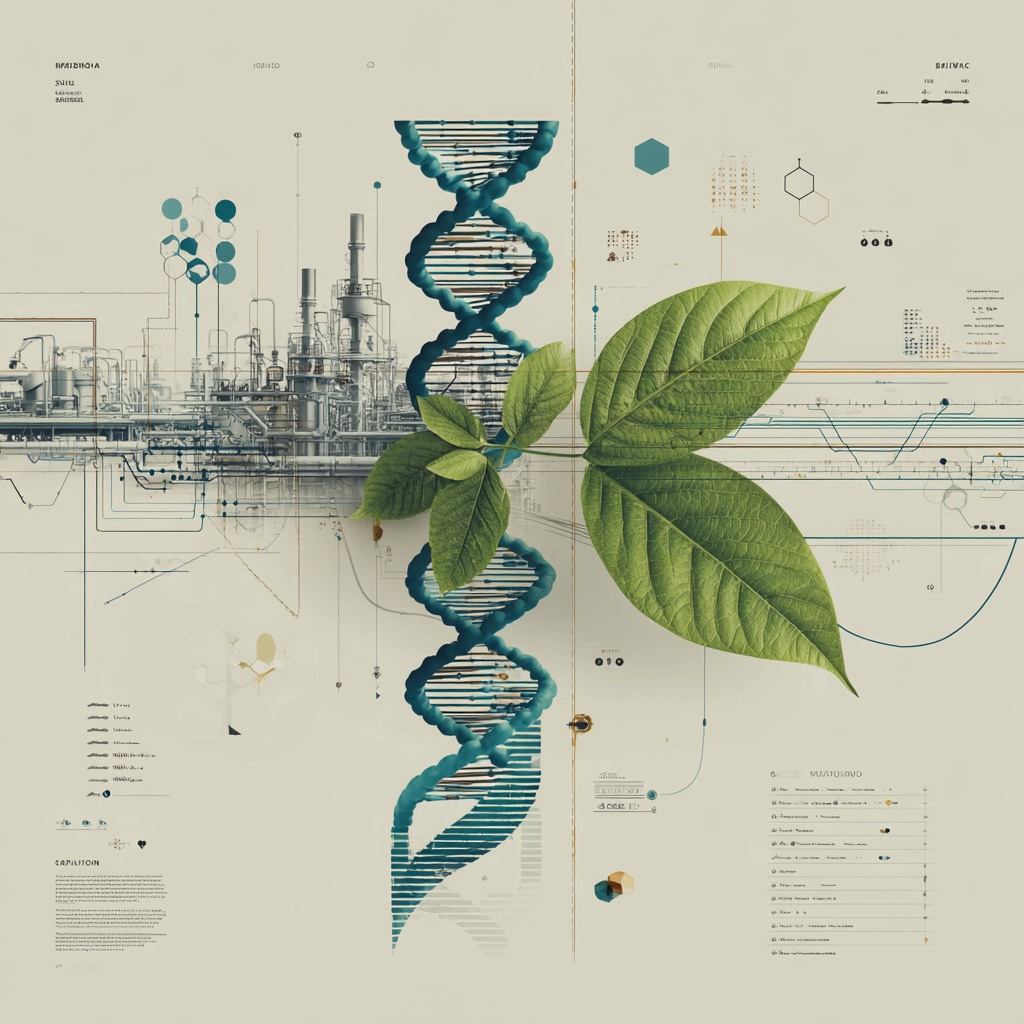Working with Nature is Unlocking (and Creating) Massive Economic Value
Last month, Boston Consulting Group and Hello Tomorrow released a report called Nature Co-Design: A Revolution in the Making, exploring the impact of harnessing nature's design principles, applying deep tech's Design-Build-Test-Learn cycle, and its economic implications.
Before I get into the report, take a brief detour with me along the Pacific Coast from San Jose, Costa Rica to the Panamanian border. Along the way, we'll pass kilometer after kilometer of African Palms growing in strict, regimented rows.
Those palms produce fruit harvested and processed into oil that makes its way into 50% of all packaged products: cooking oil, chocolate, cosmetics. You no doubt used something containing palm oil today.
In tropical countries like Brazil, Indonesia, Malaysia, and throughout Central America, deforestation has destroyed the irreplaceable genetic diversity of rain forests for palm oil monoculture.
Orangutan in Borneo displaced by deforestation to plant palm oil.
Back to the report: Nature Co-design is where biology, material science, and nanotech meet to leverage nature's design principles and manufacturing capabilities at the atomic level. It leverages deep tech's design-build-test-learn cycles to create new foods, materials, and upend economics.
20 years into the Biotech Century, we're still at the beginning of co-designing with nature, but the possibilities are amazing. The mindset and toolbox expands the possibilities for creating new value sustainably and for the benefit of the planet. Arvind Gupta, co-founder of IndieBio and now with the Mayfield Fund, calls it a $100 trillion opportunity over the next 40 years.
For example, Geltor has created a platform for brewing proteins such as collagen (until now derived from rendering animal tissue), offers bio-identical human collagen, and "tuned" ingredients as a service - radically enlarging the option space for the collagen industry.
Nature co-design requires radical shifts in engineering, manufacturing approaches, and imagination:
Bigger isn't better or more profitable.
Organisms are CAPEX; manufacturing plants OPEX.
Design-to-cost matters.
Fermentation is manufacturing.
And waste becomes an input.
Think about that: Waste is valuable. Activewear manufacturer Patagonia has long known this (and has been very successful in pushing their environmental agenda in one of the most planet-unfriendly industries - fashion). Last year, Ginkgo Bioworks spun out Allonia to unlock the potential in waste streams. Savvy companies have started to look at waste not as an annoyance but as something that could be valuable as a resource.
But scaling biological processes is a challenge because biology is non-linear: What works at the microliter scale doesn't easily translate to the liter or 1000L scale. This requires re-thinking how much end-product is really needed. Scaling down first might offer solutions. Bio-manufacturing is a hot space right now, with companies like Resilience (focused on medicines) making headlines, while companies and startups like EnginZyme and Core Biogenesis attract investors.
OK, back to palm oil. The report mentions NYC's C16 Biosciences, who have developed a way of brewing palm oil and sustainable alternatives. While this offers the opportunity to save the rain forests and localize palm oil production, it isn't without risks.
A few years back, there was a backlash against synbio-produced vanilla. At issue: What would happen to the growers that produce the very rare vanilla seeds? The Nature Co-Design report suggests we need to consider the ethical implications of technologies and their human impact. For palm oil, that means considering not only the end-users but the growers, processors, traders, and all the people that are currently creating value.
As we leverage nature as design, engineering, and manufacturing partner, we need to consider potential errors, unintended consequences, misuse, unintended consequences, and impact on future generations. To date, business has been loathe to do this.
Yet the impact and potential benefits to society are so great, so potentially positive to the planet (and beyond), that business will need to responsibly, transparently tell these stories and open dialogues around benefits, advantatges, dangers and downsides.
As a storyteller, I am excited by the stories we get to tell. The ability to apply biological solutions to real-world problems requires massive amounts of creativity.
The Nature Co-Design report is long, dense, and worth the time to study. I highly recommend you spend some time checking it out.
(I've focused on biotech applications of Nature Co-Design because that's my bias but the report includes examples that not in the life sciences, most notably TeraPore (smart filtration solutions) and Sila Nanotechnologies.)
BACKGROUND: If you want to learn more about the opportunity for applying biotechnology, co-designing with nature, I recommend reading Rob Carlson's Biology is Technology: The Promise, Peril and New Business of Engineering Life (Amazon link); Arvind Gupta's The $100 Trillion Opportunity (Medium link).
If you enjoyed this post, here are some others you may enjoy.






